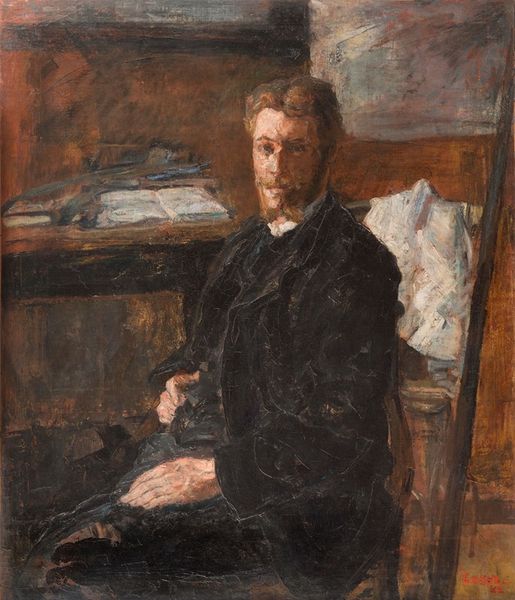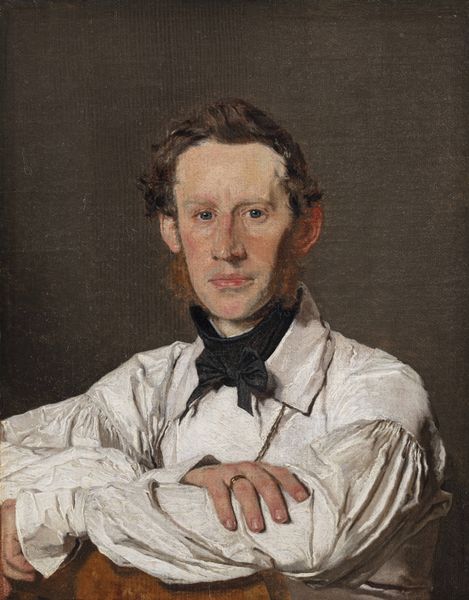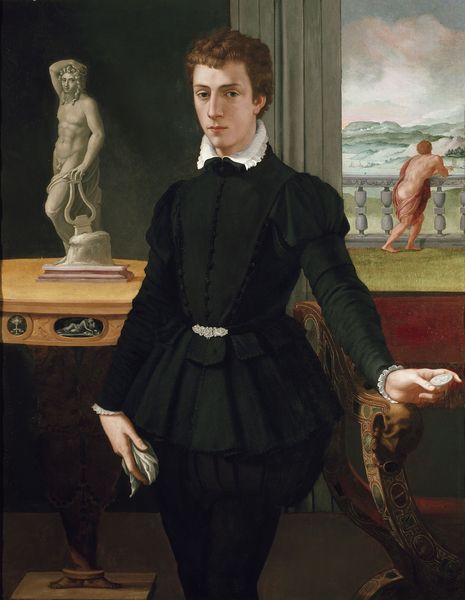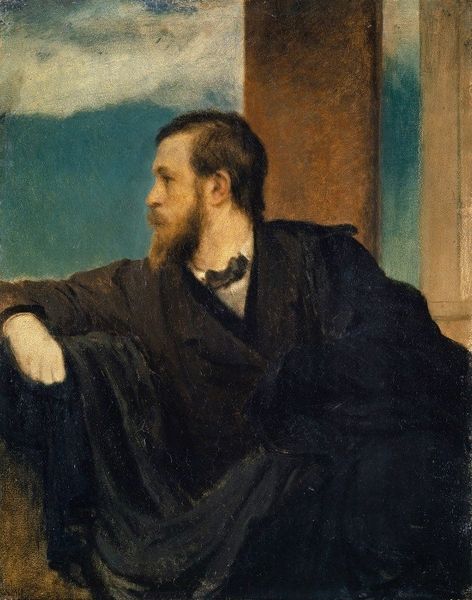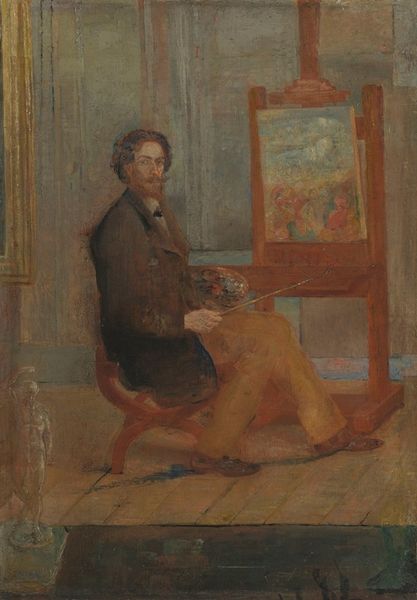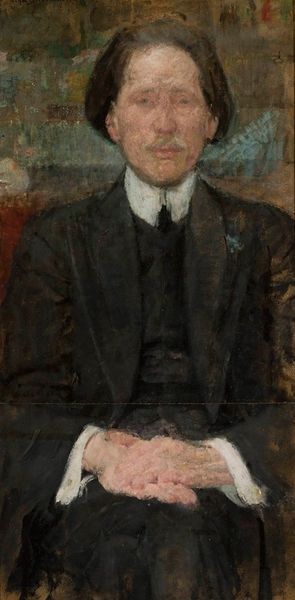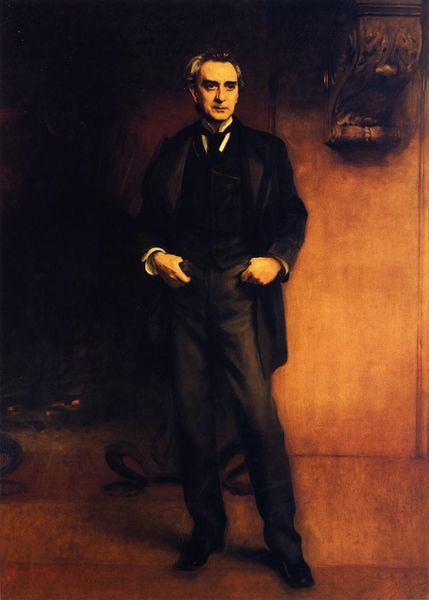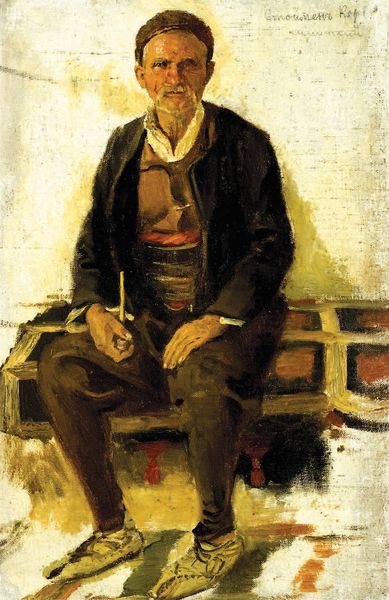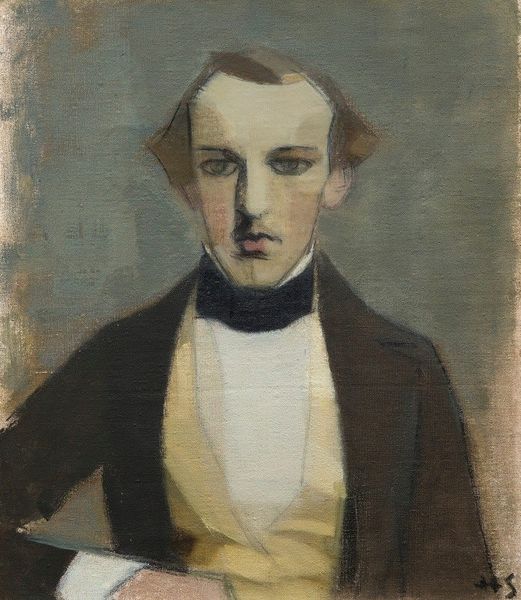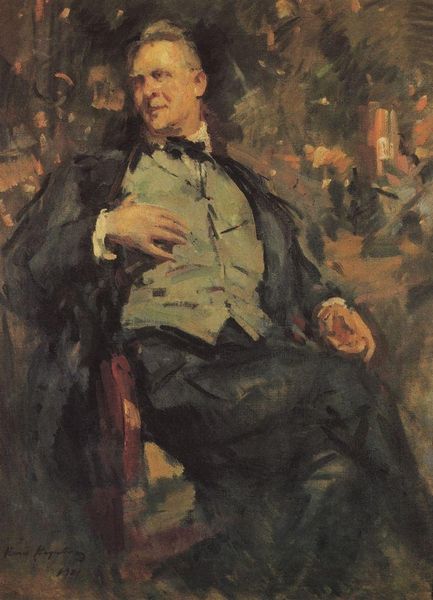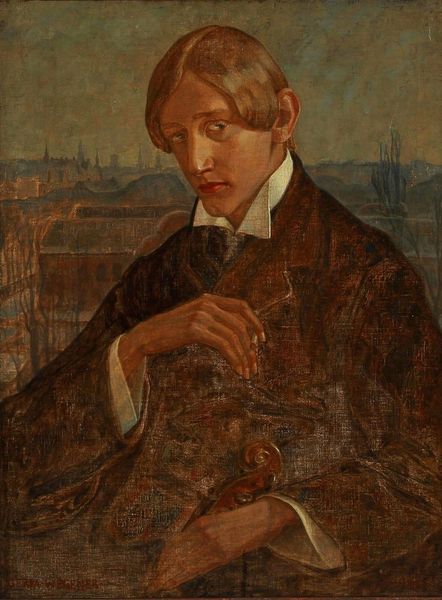
Copyright: Public domain
Editor: This is Richard Dadd's "Portrait of a Young Man," created in 1853 using oil paint. The detail is incredible, but the figure's expression is so reserved; almost detached. What do you see in this piece, beyond the surface portrayal? Curator: I see a compelling tension between representation and the lived experience of mental illness. Knowing Dadd was incarcerated for murdering his father, this portrait, painted during his confinement, becomes intensely layered. Editor: How so? Curator: Well, consider the formal composition. There's the precise rendering of the subject’s clothing juxtaposed with the almost fantastical quality of the surrounding landscape. This contrast can be seen as a reflection of the artist’s own fractured reality – a world both meticulously observed and intensely imagined. Where do we draw the line between the subject’s psychological space and his actual lived reality as depicted in the artwork? Editor: I hadn't thought of it that way, but it makes the details seem even more significant now, especially the man's distant gaze. What do you think the surrounding nature suggests? Curator: Is it a comforting haven, or another facet of his internal turmoil externalised? How does that ambiguity reflect on our perception and reception? This portrait then becomes less about the individual depicted, and more about the broader social and historical context surrounding mental health, challenging normative standards of reason. Editor: This definitely challenges the simple classification of portraiture, making it a powerful, almost subversive, statement. Curator: Exactly. It’s a testament to art's capacity to represent complex narratives, fostering dialogue on themes of identity and mental health within a Victorian social framework. It truly blurs the line between madness and sanity.
Comments
No comments
Be the first to comment and join the conversation on the ultimate creative platform.
